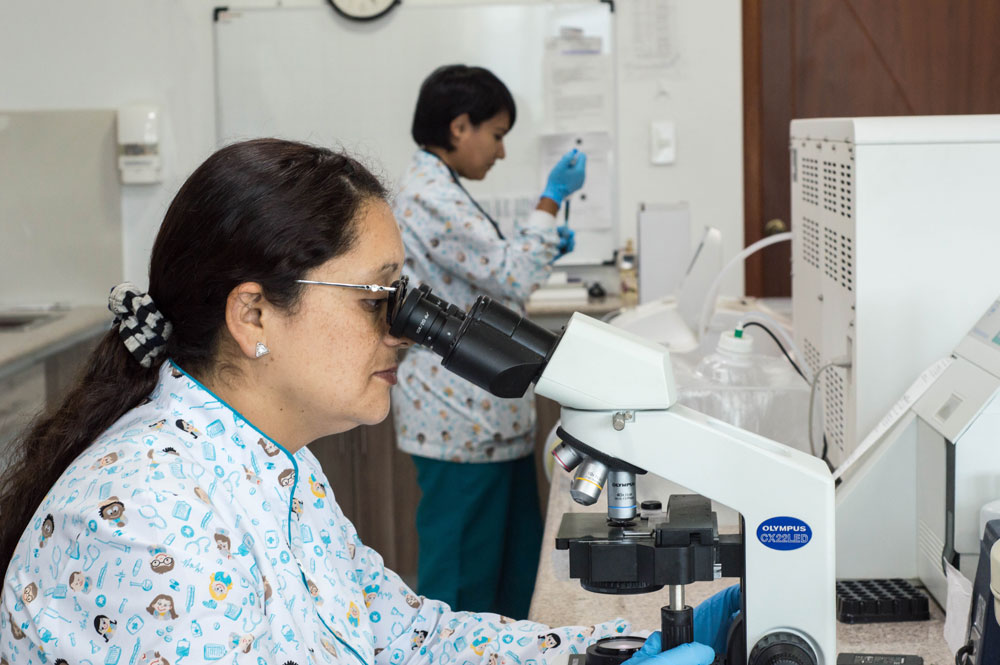Breast milk is said to be the ideal nutrition for babies but is it so very different to infant formula? Is there any truth in the idea that breast milk and formula are almost the same these days? This article looks at the difference between breast milk and formula and shares a few of the amazing ways breastfeeding protects a mother and baby.
Note that sometimes formula is necessary and babies can and do thrive on it when it is prepared correctly and safely—for more information see Supplementing With Formula.
Are breast milk and formula almost the same these days?
No! Breast milk and formula are not almost the same despite claims that they are “closer than ever”. As well as being a complete food and drink with the perfect proportion of carbohydrates, fats, proteins, vitamins and minerals; breast milk is also a living changing substance—like blood—with hormones, enzymes, living cells, white cells and antibodies.1 Formula is a processed mixed food made in a factory from a base of cows’ milk, goats’ milk or soy with added vegetable oils, fish and single cell oils, vitamins and minerals, it does not have a living component.2
What is the difference between breast milk and formula?
This section looks at some of the broad differences between breast milk and formula to help parents make an informed choice for their baby’s diet.
#1 Formula has missing ingredients
All the ingredients in breast milk are freshly made and of human origin (made in the breast). Breast milk is a biologically complete nutritional diet for a baby for about six months. Breast milk contains many more substances than formula and has hundreds to thousands of different active components.34 Ingredients missing from formula include complex living cells such as:
- Hormones—chemical messengers to coordinate body systems, regulate growth, metabolism and appetite.
- Antimicrobial factors—to protect baby against infection and inflammation.
- Digestive enzymes—to help baby digest their food.
- Growth factors—to help the baby’s intestine mature and guide development of the blood, nervous and endocrine systems.
- Cytokines—important in the immune system.
- Stem cells—cells that can develop into a variety of tissues.5
#2 Formula does not protect against infection
Breast milk is highly significant to the development of a baby’s immune system which is not fully developed for five or six years.67
- Breast milk provides protection for the baby until a baby’s own immune system is fully functional.8 9
- Breast milk helps the immature immune system develop normally.10
- Breast milk prevents many diseases in the breastfed infant thanks to its perfect balance of vitamins, minerals and nutrients, both in the early weeks and long term.
#3 Formula contains artificial ingredients and contaminants
The ingredients in formula are from mixed sources. There are non human proteins, fats, carbohydrates, vitamins and additives. Reconstituting powdered formula also requires a lot of (chemically treated and boiled) water. There are also common food allergens, genetically modified soil fungi and marine algae and contaminants.11 The full effects of some of these mixed foods and contaminants are not yet known, but examples include:
- Formula supports a very different microbiome (community of microorganisms in a baby’s body) compared to breast milk. Even one bottle of formula can affect the microbiome.12 The full importance of friendly bacteria to long term health and the immune system is still being discovered.13 (Minchin, 2015)
- Formula is associated with a rise in allergies, hypersensitivity, inflammation, and autoimmune disorders (Minchin, 2015).
- Fatty acids in formula fats can kill intestinal cells.14
- Aluminium contamination in formula can be very high posing health risks.15
- Oestrogen mimicking compounds found in formula, baby food cans and feeding bottles may influence reproductive organs and sexual behaviour.16
- Formula is more difficult to digest. Breast milk is very quickly and easily digested; it can be digested in one hour and also contains digestive enzymes.17
- Powdered formula is not sterile and can contain the disease causing bacterium Cronobacter sakazakii (previously known as Enterobacter sakazakii)1819 making it essential that formula is reconstituted correctly. Cronobacter sakazakii can cause sepsis and meningitis.20
#4 Formula does not protect a breastfeeding mother’s health
The act of breastfeeding has health advantages for the nursing mother as well as baby:
- Breastfeeding protects against ovarian cancer21, endometrial cancer 22 and premenopausal breast cancer23.
- Breastfeeding protects against osteoporosis, cardiovascular disease, metabolic syndrome, type 2 diabetes, and obesity242526
- Breastfeeding protects against autoimmune diseases e.g. rheumatoid arthritis.27
- Breastfeeding helps with bonding, well-being, quality and quantity of sleep, and reduces the risk of postpartum depression and inflammation. See Breastfeeding: What’s in it for Mothers? by Kathleen Kendall-Tackett for more reading.
- Breastfeeding offers contraceptive protection when certain conditions are met and helps with birth spacing see Can I Get Pregnant While Breastfeeding?
- Breastfeeding can help many mothers lose weight postpartum.28 29
Breastfeeding for even a short amount of time reduces risk by 16–24% for triple negative breast cancer, the most aggressive form of the disease
According to several meta-analyses, ovarian cancer risk is 24–30% lower in women who have ever breastfed, versus those who have never done so
#5 Formula is not environmentally friendly
The manufacture of formula uses a huge amount of energy and resources such as land for dairy farming, agricultural land for formula ingredients, clean water, and fuel for transporting the raw ingredients and end product. Formula manufacture also creates millions of single use plastic containers and metal cans for waste disposal along with millions of feeding bottles and teats. In contrast, breast milk is sustainably produced with no wasteful packaging and no harmful impact on the environment. For much more information see Breast Milk is Environmentally Friendly — Formula is Not.
Are there any differences between a formula fed baby and a breastfed baby?
Maureen Minchin, breastfeeding researcher and author, explains that despite the fact that so many babies are exclusively formula fed, studies comparing formula fed babies who have never had any breast milk with breastfed-and-never-had-any-formula populations are rare. Even so, over time, more and more differences have been identified and their relevance to short-term and long-term health are gradually being documented.30 Examples include:
Health differences
Formula feeding is associated with:
- More ear infections, gastroenteritis, diarrhoea (Stuebe, 2009) ulcerative colitis, Crohn’s disease.31
- Higher risk of necrotising enterocolitis (NEC) a life threatening bowel condition.32 Special growth factors in breast milk help the baby’s stomach and intestines to mature and prevent NEC33
- More bronchiolitis (a respiratory illness) in the first year of life.34
- Increased risk of multiple sclerosis (an autoimmune disease). Breast milk provides essential fatty acids to promote strong healthy myelin (the fatty sheath or covering found around nerves). Multiple sclerosis is linked to excessive consumption of cows’ milk during infancy and the consumption of animal fats which are deficient in unsaturated fatty acids.353637
- More diabetes 38(Walker, 2014; Stuebe, 2009)
- Higher risk of cancer. Breast milk kills cancer cells in the laboratory 39 which may explain how breastfeeding helps protect against childhood cancers. Breast milk protects against leukaemia, a form of cancer affecting white blood cells and bone marrow (Stuebe, 2009). One study found an increased risk of childhood leukaemia was associated with the length of formula feeding and a delayed introduction of solids.40 Formula fed baby girls are said to have a higher chance of developing breast cancer in later life.41
- Higher risk of sudden infant death syndrome (SIDS)42 (Stuebe, 2009)
- Suboptimal development of the mouth and airways. The mechanics of breastfeeding affects airway formation and dentition—by spreading the baby’s palate there is plenty of room for all the adult teeth.43
Differences in risk of allergies and autoimmune disorders
Formula fed babies have more allergies, autoimmune disorders, inflammation, hypersensitivity and asthma (Minchin, 2015; Walker, 2014; Stuebe, 2009).
Different sized organs
Different sized ovaries and testicles
One study found differences in the size of the ovaries and testicles between breastfed and formula fed babies by four months of age. Formula fed baby girls had larger ovaries and more cysts per ovary. Boys who were fed cows’ milk or soy milk formulas had smaller testicles compared to breastfed boys.44
Smaller thymus
The thymus is a very important specialised organ of the immune system. A formula fed baby has a thymus that is half the normal size of a breastfed baby.4546
Bigger kidneys
The kidneys of a formula fed baby have been found to be bigger than those in a breastfed baby by three months of age. 47
Differences in brain development
Breast milk directly affects the development of the brain and central nervous system. DHA (docasahexaenoic acid—an omega-3 fatty acid), cholesterol, other breast milk fats and lactose (the main sugar in breast milk), have all been identified as important for a healthy nervous system, for brain development and intelligence.484950
Differences in risk of obesity
Breastfeeding can help to protect against obesity in childhood and adolescence.51 Leptin is one of several hormones in breast milk that regulates food intake and energy metabolism and could be linked with preventing obesity.525354
How does breast milk protect a baby against infection?
Breast milk supports and shapes the baby’s immune system. Breast milk is full of specially targeted immune factors to protect the baby, even the carbohydrates, fats and proteins have important roles to protect a baby against infection.
These immune factors do not just sit there; they work together, in beautiful harmony, like the instruments in a symphony orchestra, in reaction to the various bacteria, viruses, and funguses to which the mother, and thus the baby, are exposed.
Oligosaccharides
Breast milk contains carbohydrates called oligosaccharides. Some oligosaccharides are indigestible to the baby but appear to feed and promote the friendly protective bacteria bifidobacteria and lactobacilli that live in a baby’s gut. Oligosaccharides also actively prevent pathogens from sticking to the walls of the gastrointestinal system and urinary tract. Friendly bacteria in a baby’s gut are important to
- promote good digestion
- boost the immune system
- hinder the growth of undesirable species of bacteria
Oligosaccharides help to protect babies against ear infections, respiratory tract infections, urinary tract infections and diarrhoea.555657 In comparison, a formula fed baby has a much higher proportion of less desirable bacteria in their bodies 58(Walker, 2014).
Fat attack
Fatty acids and monoglycerides attack viruses, Giardia lamblia, Entamoeba histolytica, and some bacteria. 59
Protein protects
The protein portion of breast milk is made up of casein and whey (curds and whey).
- Caesin gives milk its white colour and is very nutritious containing all the essential amino acids. It is also vital to the normal development of the gastrointestinal system and has antimicrobial (kills microorganisms) and antihypertensive (lowers blood pressure) properties.
- Whey makes breast milk look bluish, it is also very nutritious and contains important protective antimicrobial factors: alpha-lactalbumin, antibodies, lactoferrin, and lysozyme (see below).
Antimicrobial factors in breast milk
Just some of the antimicrobial factors in breast milk include:
- Alpha-lactalbumin is antibacterial and can kill cancer cells. A form of it known as HAMLET (human alpha lactalbumin made lethal to tumour cells) kills many different types of cancer cells. This may explain why artificially fed children have higher rates of leukaemia and lymphomas and may explain reduced breast cancer risk in breastfeeding women.
- Antibodies (immunoglobulins) are large proteins used by the immune system to identify and neutralise threats like bacteria and viruses. The high concentration in colostrum and in preterm mothers’ milk provides immediate protection for the baby against microorganisms. There are five main types in breast mlk. Secretory IgA (SigA) is the main antibody in breast milk. It acts against bacteria by binding to their cell walls and preventing them from attaching to the baby’s mucosal membranes. Depending on the micro-organisms ingested or breathed in by the mother, specific targeted Sig A antibodies are created in the lymphoid tissue (part of the lymphatic system involved with immunity) to fight infection.
- Lactoferrin is a glycoprotein that carries iron and controls the level of iron in the blood. It is antibacterial against many bacteria including Escherichia coli (E coli), and it is antiviral, antifungal, and prevents inflammation.
- Lysozyme is an enzyme that protects against bacterial infection by destroying the cell walls of bacteria. The concentration of this increases in breast milk as baby grows so providing more protection once they begin exploring their environment (Shenker, 2017).
- White blood cells or leucocytes (Amercian spelling leukocyte) are special immune system cells that fight infections and activate other defences.60

More research is needed to identify how the difference between breast milk and formula may affect long term health.
Summary
Breast milk is not just a life style choice it is important for the present and future health of mother and child. Despite manufacturers’ claims, formula is not almost the same as breast milk. Not only does formula have many missing ingredients but the ones that are there are from a range of animal and plant sources instead of human origin. More research is needed to identify how the difference between breast milk and formula may affect long term health.
it is still not possible to produce anything like breast milk, any more than we can produce artificial blood


